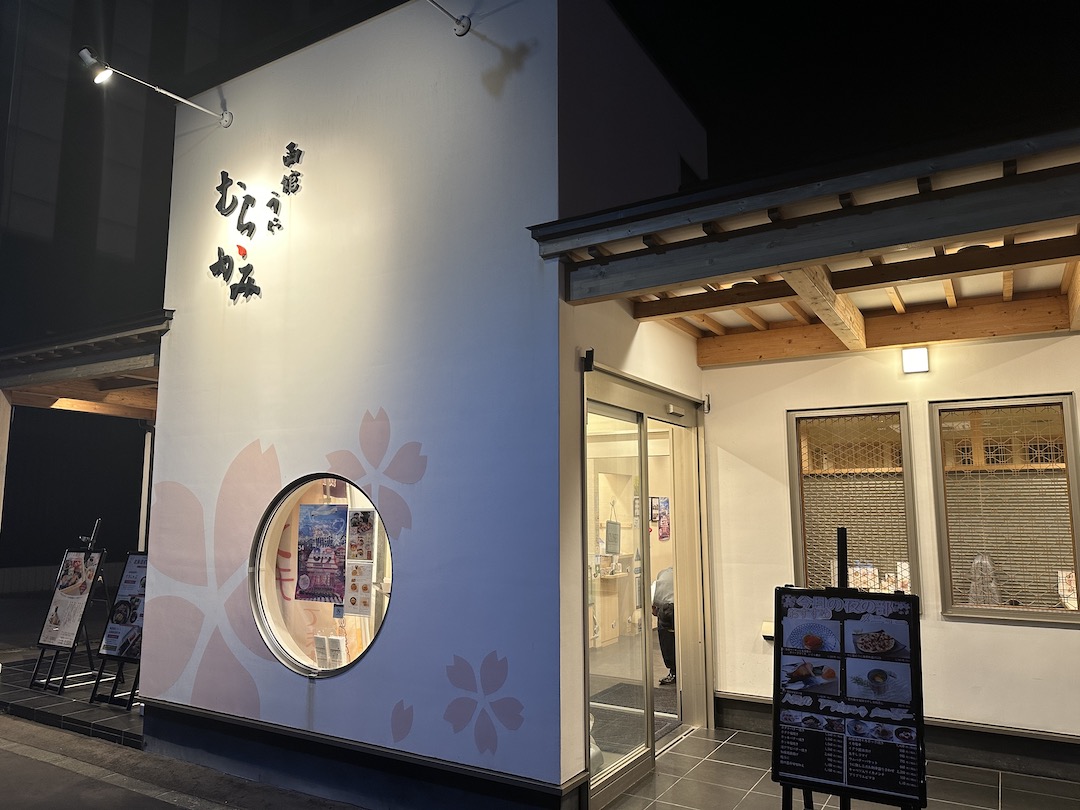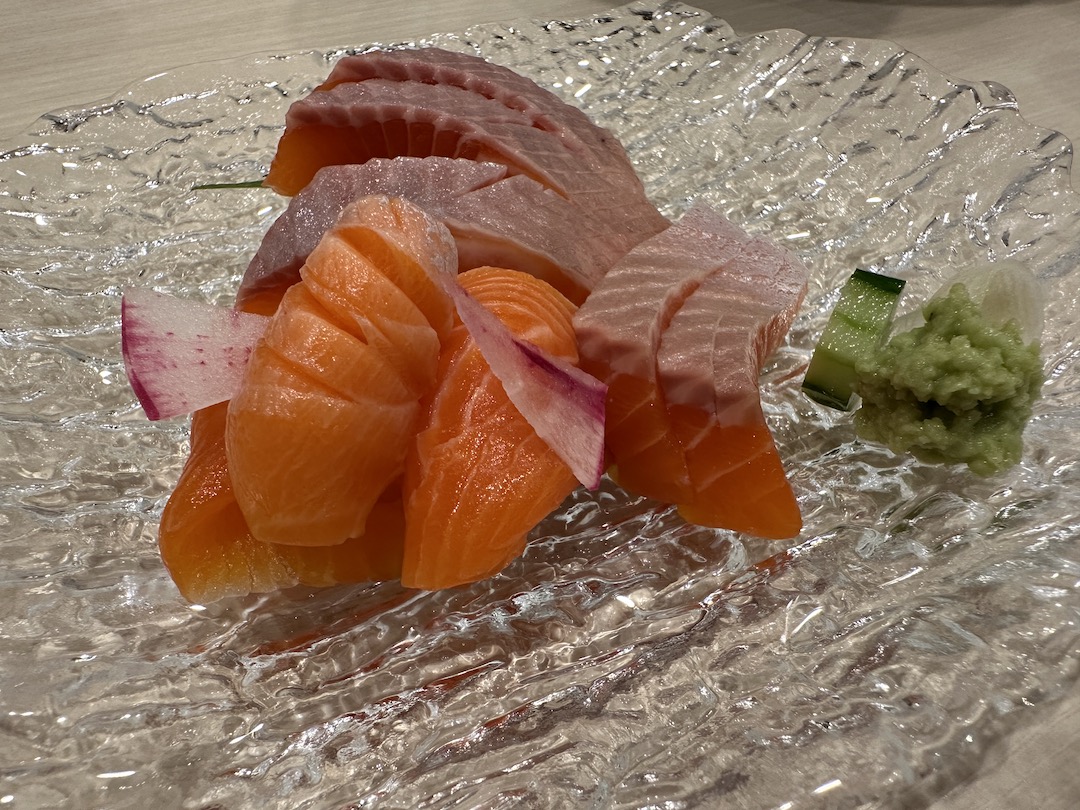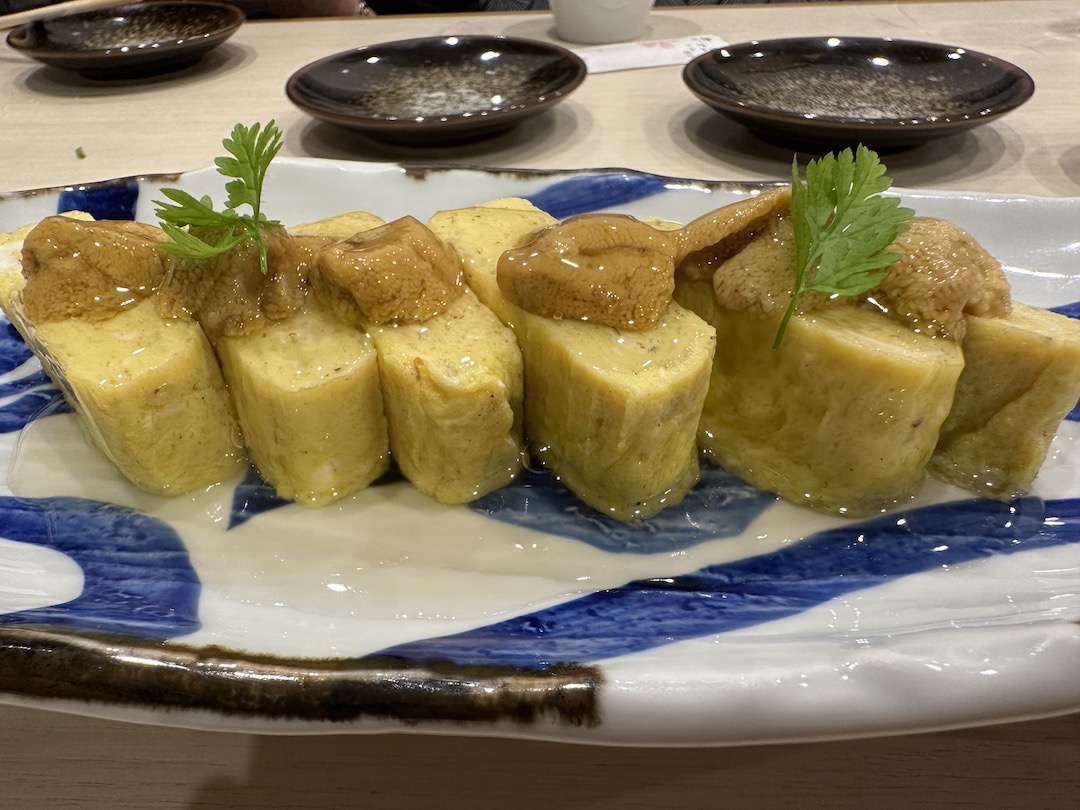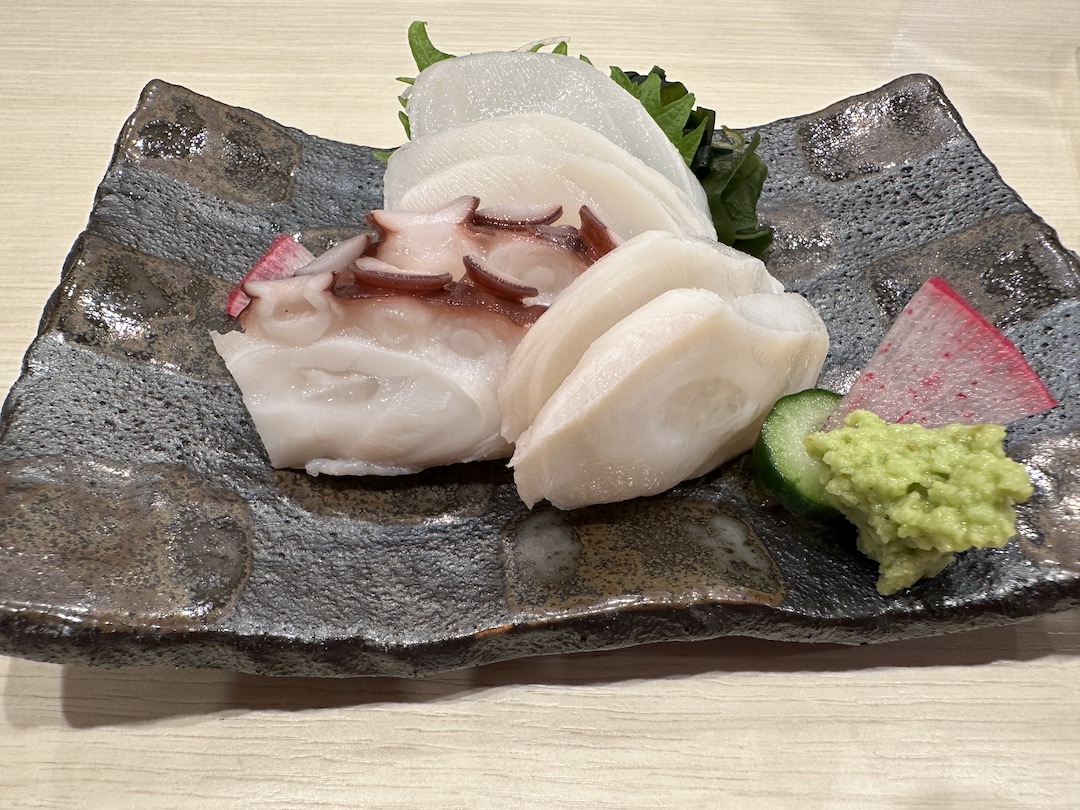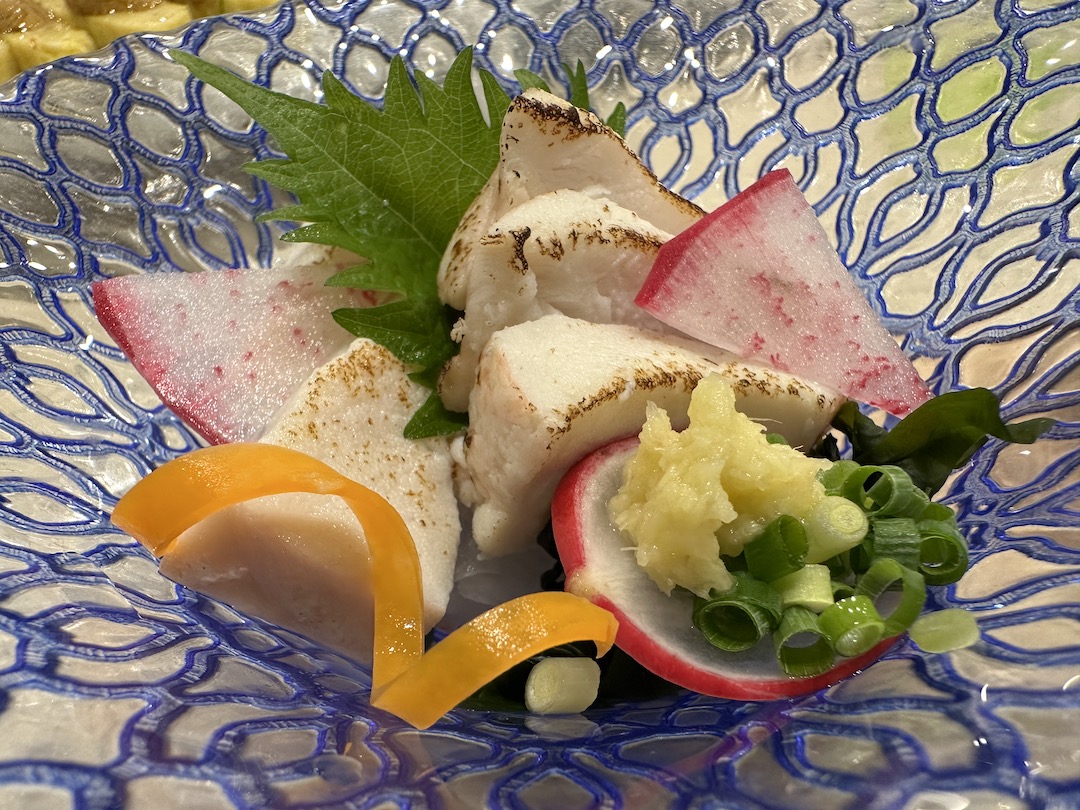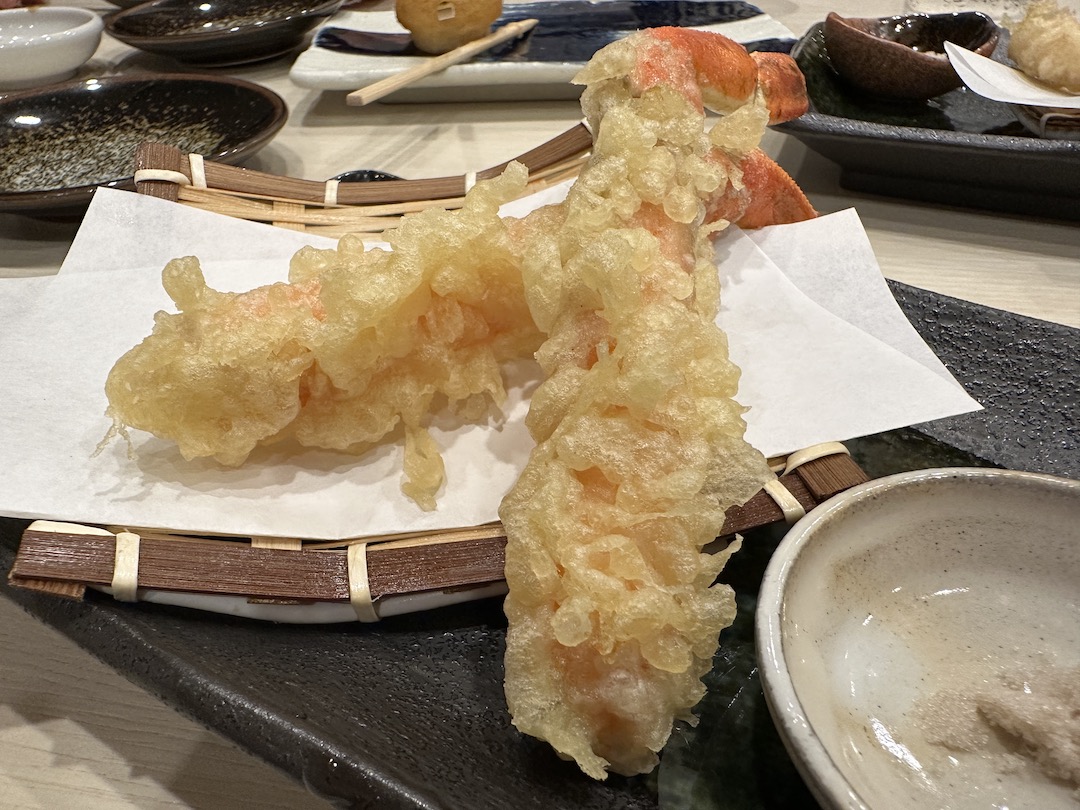Browse using the new Vinous website now. Launch →
Printed by, and for the sole use of . All rights reserved © 2015 Vinous Media
7-1 Wakamatsu-cho
Hakodate, Hokkaido
Japan
BY NEAL MARTIN | AUGUST 13, 2025
The Food:
Salmon sashimi
Sea urchin with soft-boiled egg roll
Sea urchin pizza and fried potatoes
Sea urchin and rice
Octopus sashimi
Grilled octopus milt with ponzu sauce
Botan shrimp
The Wine:
| 2020 Occi Gabi Winery Chardonnay | 90 |
Octopus sperm. Two words already conjuring images in your mind. I can just see your face. Octopus what? To be honest, I had no idea I was holding this delicacy in my chopsticks until I remarked upon the "delicious tofu." The young waiter, with unhidden glee, corrected me.
“Oh, really?” I replied. Then I duly popped it into my mouth.
Hey, what do you think Anthony Bourdain would have done?
The façade of Uni Murakami.
Desperate to escape Tokyo’s merciless heat, I flew to the coastal town of Hakodate at the southern end of Hokkaido. Hakodate is famous for three things. Firstly, this is the port Commander Perry visited in 1854 to end Japan’s isolationism, where the treaty allowing American ships to dock was signed the following year. Secondly, it is fast becoming known as the city close to where Étienne de Montille planted his 28-hectare vineyard of Pinot Noir and Chardonnay. You can argue amongst yourselves which is most significant. Thirdly, and most importantly, Hakodate has seafood to die for. The town is populated with countless restaurants, as well as a small but bustling fish market that is well worth visiting, particularly early in the morning. Uni Murakami is located near the market and famed for its sea urchin, or uni. There are two branches—I visited the one known as Hakodate Ekimae. The restaurant has a modern façade and is slightly larger than other local restaurants, though not huge. Customers occupy small private alcoves, and there is a private room for larger parties. As you enter the premises, you walk past tanks with mainly sea urchins bobbing around, wondering when their time is up.
Salmon sashimi.
We start with a salmon sashimi that is off the charts. Slices glisten on the plate, a measure of freshness that is almost impossible to find outside Japan, certainly not at this price. The texture is so pure that the fish melts in your mouth. I eschew the soy as it would detract from the pleasure. Nothing more needs to be said.
Sea urchin with soft-boiled egg roll.
Naturally, we have to try the sea urchin served with boiled egg roll. Just look at the iridescence in the photo. The flavour is incredibly intense and pure. Simplicity: the ethos that governs Japanese cuisine. Why spoil something with unnecessary additions?
I also feel obliged to order the sea urchin pizza because, last time I checked, it’s not on the menu at Pizza Express. I suppose in some way it is a sacrilege because baking heats away the nuance of the urchin, but I appreciate the thinness of the base and delicacy of flavour.
Octopus sashimi.
Next is a plate of octopus sashimi. Though it is not to everyone’s taste—the texture can sometimes be rubbery if it is not top quality, and some do not like the suckers—this octopus, or tako in Japanese, is stunning. It is less chewy than you find in most restaurants, even expensive ones.
Grilled octopus milt with ponzu sauce.
Next, the octopus sperm, or to use its epicurean term, octopus milt. In Japan, this is called shirako, which translates to “white children.” I don’t know about you, but I find that uncomfortably literal. Although easy to find cod milt, it is far harder to find that of octopus, and, though inexpensive, it is prized by gourmands. You are most likely to find octopus milt in Hokkaido in winter. Served here with ponzu sauce, the milt is delicious, not unlike sweet tofu with a nuanced saltiness. I am tempted to order more! But if it does make you squeamish, ask yourself: is it any different from brawn or andouillette, or perchance, simply the male equivalent or cod roe? No.
Botan shrimp.
We finish with some Botan shrimp tempura. My word…the sweetness of these shrimp is heavenly, though purists might argue that the coating is a little excessive.
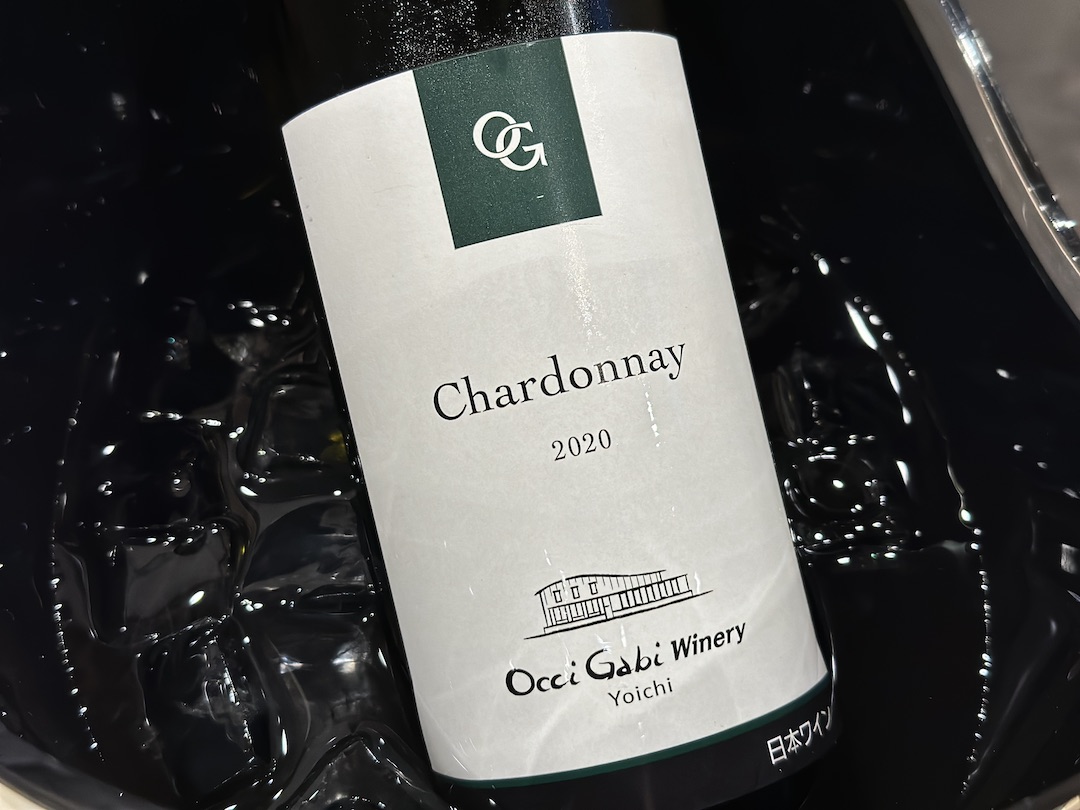
The wine selection is limited, but I’m not in the mood for Japanese sake. I opt for a locally produced wine, the 2020 Chardonnay from Occi Gabi Winery. Let’s see what competition is waiting for Étienne de Montille. At first, I do not like it. Malic on the nose and palate, it initially feels a bit simple, maybe not quite ripe enough. But as the dinner wears on, I notice a wonderful marine scent emerging on the nose as the palate attains more balance and depth. It reminds me of old-school Chablis, a bit mean and uncompromising, not unlike a Chablis from, say, Didier Picq. In the end, I finished the bottle and could have drunk more.
Uni Murakami typifies everything that makes dining in Japan a completely different experience from anywhere else. It dispenses with all the frills. The raison d’être is simply to offer seafood non plus ultra. The mantra is freshness, freshness, freshness. Prices are a fraction of what you would pay outside the country, and perhaps the only downside is that subsequent sashimi or sea urchin you encounter elsewhere will pale in comparison. Even at top restaurants, you will come away thinking, “Well, that was nice, but it wasn’t as good as that place in Hakodate.” I know that more people, including wine lovers, are venturing to this part of Japan because many can see its potential for viticulture—much of that driven by de Montille.
Now you know where to go and what to order, and when you see shirako?
Well, it depends how much Bourdain is in you.
© 2025, Vinous. No portion of this article may be copied, shared or redistributed without prior consent from Vinous. Doing so is not only a violation of our copyright but also threatens the survival of independent wine criticism.
You Might Also Enjoy
Vinous Table: Sens & Saveurs, Tokyo, Japan, Neal Martin, August 2025
Japan Gastronomy: A Primer, Neal Martin, April 2024

